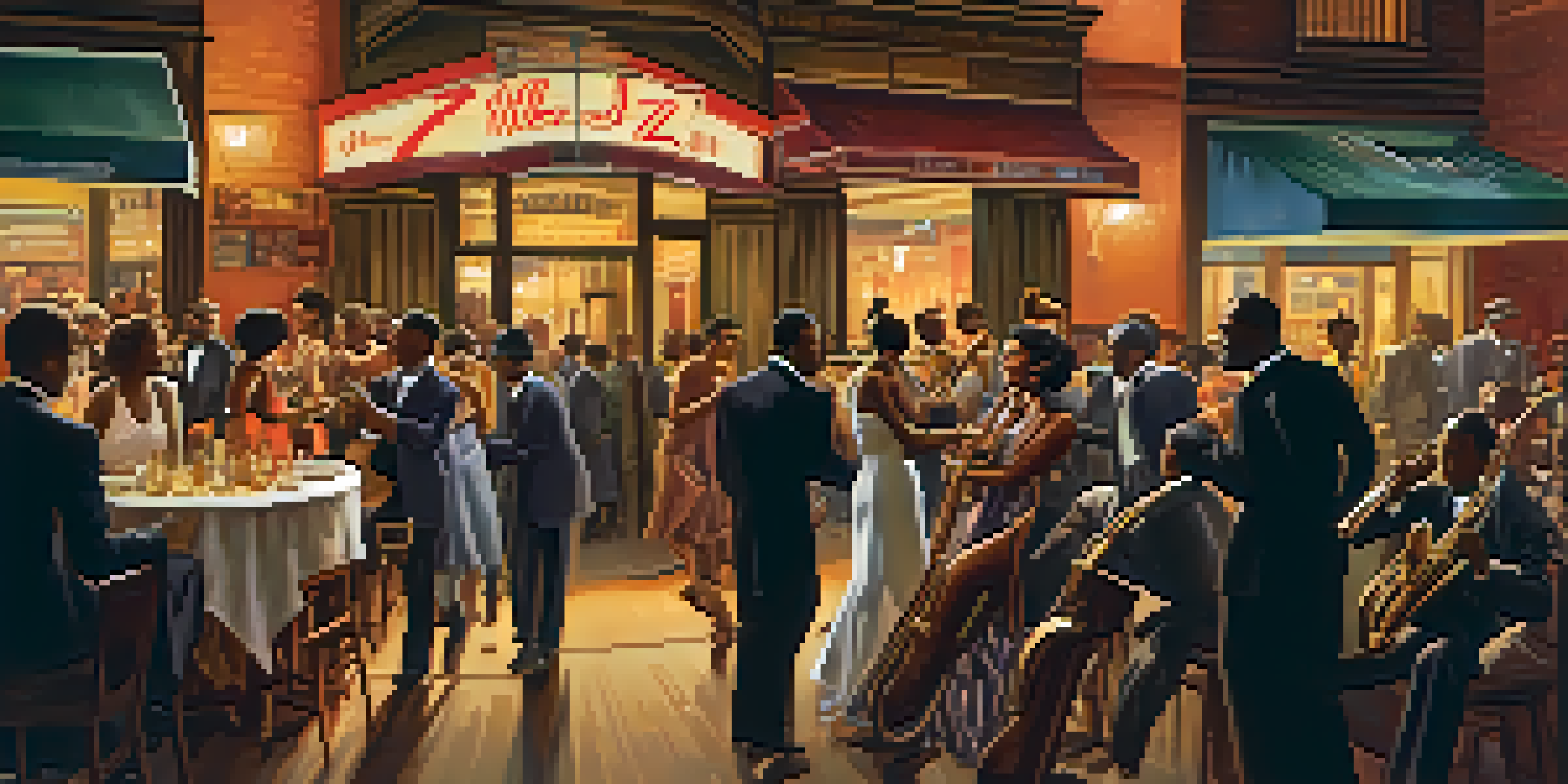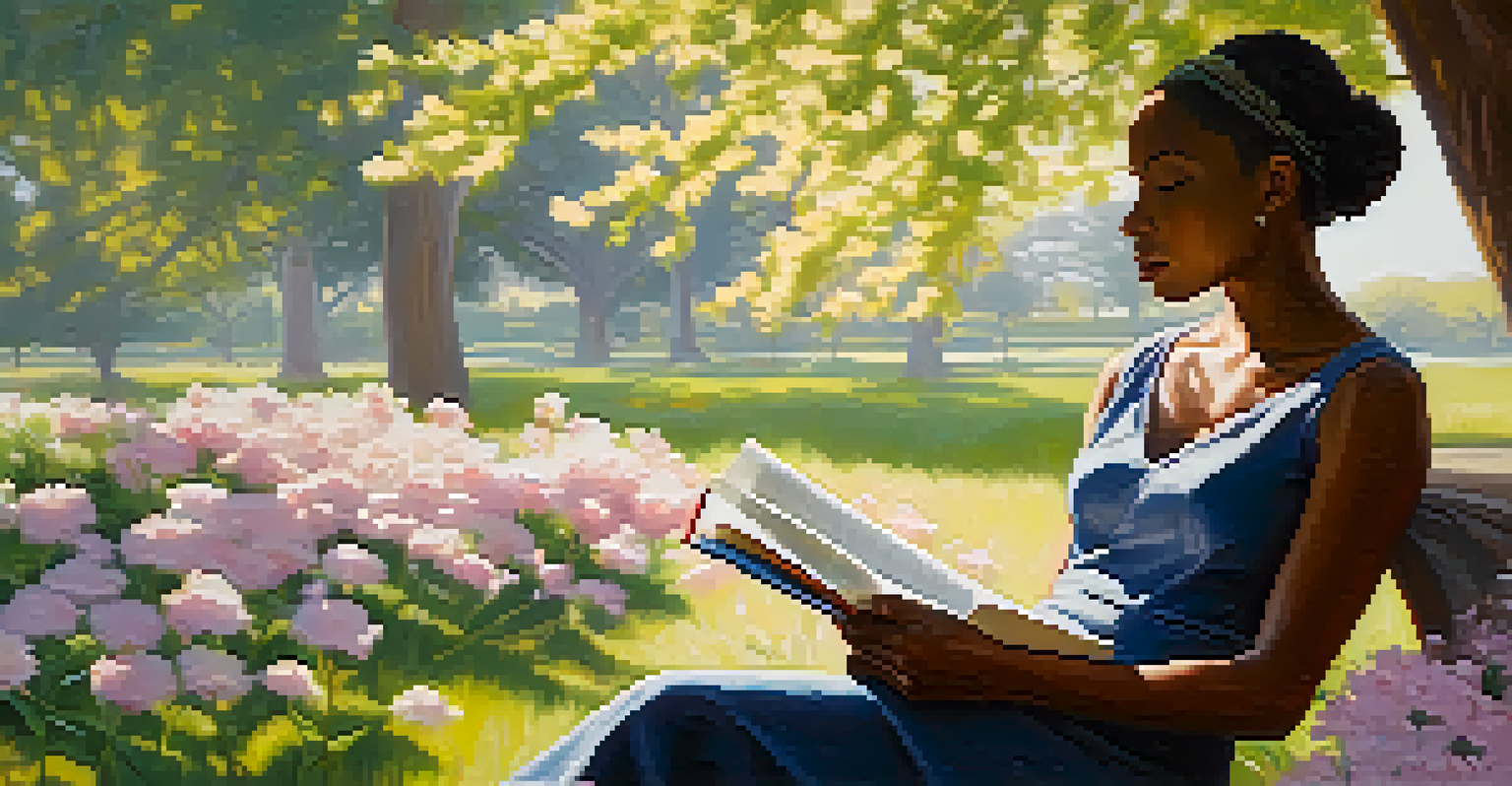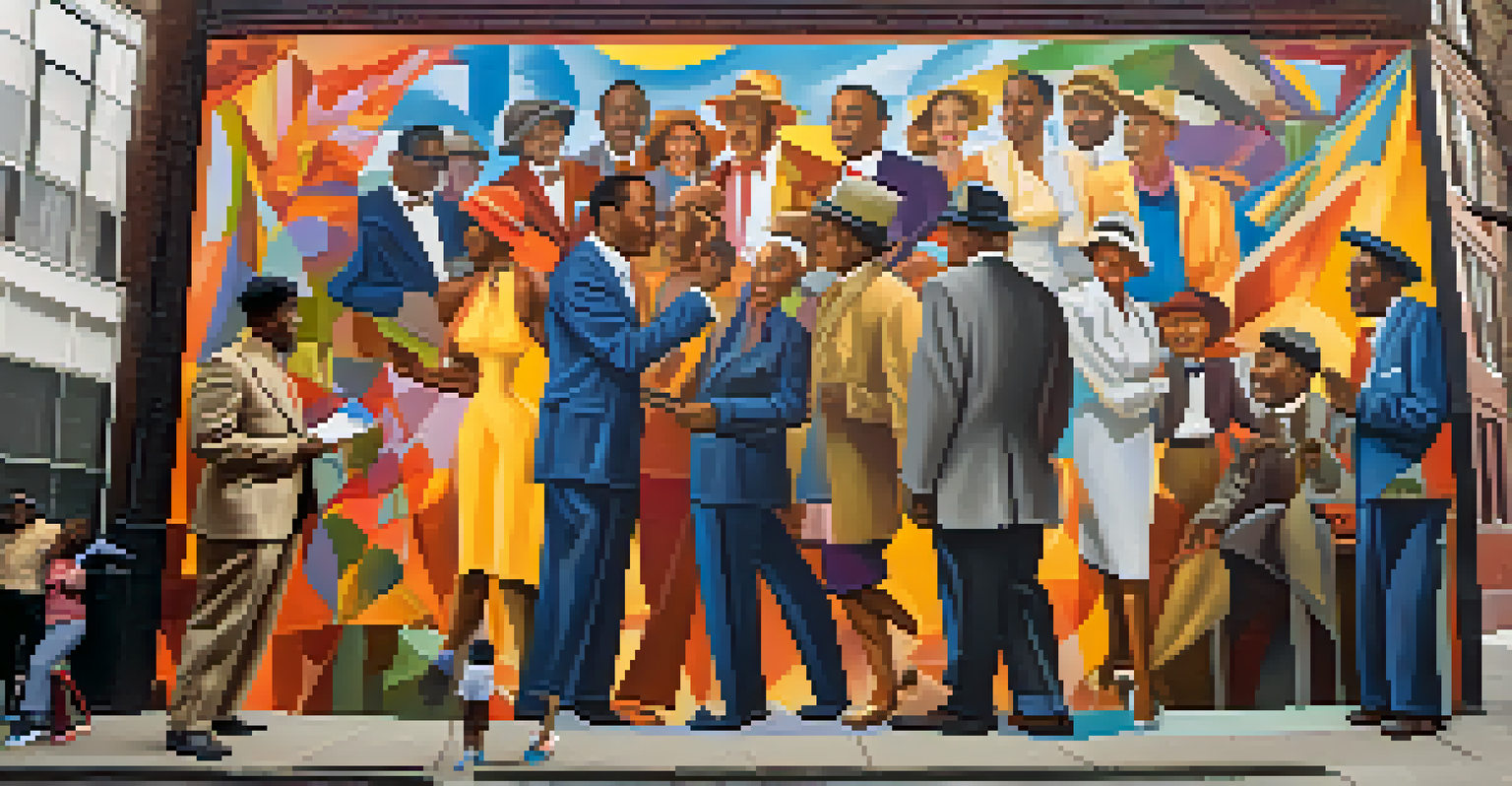Harlem Renaissance: The Cultural Explosion of the 1920s

Understanding the Harlem Renaissance and Its Roots
The Harlem Renaissance was a cultural, social, and artistic explosion centered in Harlem, New York, during the 1920s. It emerged as a response to the racial injustices faced by African Americans, as they sought to express their identity and culture. This period marked a pivotal moment where black voices gained prominence in literature, music, and art, fostering a sense of pride and community.
The Negro artist and the racial mountain.
Factors such as the Great Migration, where African Americans moved from rural South to urban North, played a significant role in reshaping Harlem's cultural landscape. Many sought economic opportunities and an escape from oppressive conditions, bringing with them diverse traditions and experiences. This migration set the stage for a new cultural identity that would thrive in the heart of Harlem.
As artists, musicians, and writers gathered in Harlem, they created a vibrant community that celebrated African American culture. This renaissance not only challenged the prevailing stereotypes of black life but also laid the groundwork for future civil rights movements. The impact of this era would resonate far beyond the 1920s, influencing generations to come.
Key Figures of the Harlem Renaissance
Among the many influential figures of the Harlem Renaissance, Langston Hughes stands out as a defining voice. His poetry, rich with rhythm and imagery, captured the essence of the African American experience. Hughes encouraged a sense of pride in black culture, often blending jazz influences into his works, making poetry accessible and relatable.

Zora Neale Hurston, another prominent figure, used her writing to celebrate African American folklore and traditions. Her novel 'Their Eyes Were Watching God' explores themes of identity and empowerment, showcasing the strength of black women. Hurston's work emphasized the importance of heritage and gave a voice to those often marginalized in society.
Cultural Explosion in Harlem
The Harlem Renaissance was a vibrant cultural movement that celebrated African American identity through art, music, and literature in the 1920s.
Claude McKay, a Jamaican immigrant, contributed significantly to the movement with his powerful poems and novels. His work often addressed themes of racial pride and resistance, challenging the status quo. Together, these figures, along with many others, forged a new narrative that celebrated African American culture and paved the way for future artists.
The Role of Music in the Harlem Renaissance
Music played a central role in the Harlem Renaissance, with jazz emerging as a defining genre. Artists like Duke Ellington and Louis Armstrong brought jazz to life in vibrant clubs and theaters, creating an atmosphere of celebration and creativity. This genre not only entertained but also served as a form of expression for the struggles and joys of African American life.
There are years that ask questions and years that answer.
The Cotton Club and the Apollo Theater became iconic venues where jazz and blues flourished. These spaces were not just places to listen to music; they were cultural hubs where people gathered to share experiences and celebrate their heritage. The rhythms and improvisations of jazz mirrored the dynamic spirit of the Harlem Renaissance itself.
Additionally, the influence of gospel music resonated deeply within the community, providing a spiritual foundation that uplifted many. The combination of jazz, blues, and gospel created a rich tapestry of sound that defined the era. Music became a powerful tool for social change, connecting people across racial divides and fostering a sense of unity.
Literature: A Voice for Change in the 1920s
Literature during the Harlem Renaissance was characterized by a quest for identity and self-expression. Writers explored themes of race, gender, and social justice, using their words to challenge societal norms. Through poetry, essays, and novels, they articulated the complexities of black life in America, forging a new literary tradition.
The works of poets and novelists often intertwined personal experiences with broader societal issues. For instance, Hughes' poem 'The Negro Speaks of Rivers' reflects the deep connection between African heritage and contemporary identity. Such literary pieces not only resonated with African Americans but also educated a wider audience about their struggles and triumphs.
Influential Figures Shaping Art
Key figures like Langston Hughes and Zora Neale Hurston played crucial roles in defining the era's artistic expression and advocating for racial pride.
This era also saw the rise of literary societies and clubs where writers could share their work and ideas. These gatherings fostered collaboration and mentorship, allowing emerging voices to flourish. The legacy of this literary explosion continues to inspire writers and activists today, reminding us of the power of words in the fight for equality.
Art and the Visual Expression of Identity
Visual arts played a significant role in the Harlem Renaissance, with artists using their mediums to depict the African American experience. Painters like Aaron Douglas and Archibald Motley captured the vibrancy of Harlem life through bold colors and dynamic forms. Their works celebrated black culture and sought to redefine the narrative surrounding African Americans in art.
The themes of struggle, resilience, and joy were often highlighted in these artworks, providing a visual representation of the community's spirit. For example, Douglas's murals illustrated African American history and culture, merging traditional African motifs with modern styles. This blending of influences created a unique aesthetic that resonated with both black and white audiences.
Art exhibitions and galleries emerged, showcasing the talents of African American artists. This visibility was crucial in challenging stereotypes and promoting appreciation for black artistry. The visual arts during this time not only served as a form of expression but also as a means of advocacy, pushing for recognition and equal representation in the broader art world.
The Impact of the Harlem Renaissance on Future Generations
The Harlem Renaissance laid the groundwork for future movements in art, literature, and social justice. Its legacy can be seen in the Civil Rights Movement of the 1960s, where the cultural pride fostered during the 1920s inspired activists to demand equality and justice. The voices that emerged during this era became symbols of resilience and hope for generations to come.
Moreover, the renaissance influenced a new wave of artists and writers who sought to build on the foundation laid by their predecessors. Contemporary figures in music, literature, and visual arts often cite the Harlem Renaissance as a source of inspiration. This connection highlights the enduring power of cultural movements to shape societal change.
Legacy of Social Change
The Harlem Renaissance laid the foundation for future civil rights movements, influencing generations of activists and artists in their pursuit of equality.
Today, the lessons learned from the Harlem Renaissance continue to resonate, reminding us of the importance of cultural expression in the fight for equality. As we celebrate the achievements of this era, we acknowledge the ongoing struggle for justice and the role of art in advocating for change. The spirit of the Harlem Renaissance lives on, inspiring new generations to tell their stories.
Conclusion: Celebrating a Cultural Legacy
The Harlem Renaissance was more than just a cultural movement; it was a powerful affirmation of African American identity and creativity. The artists, writers, and musicians of this era challenged societal norms and celebrated their heritage in ways that still resonate today. Their contributions laid a foundation for future generations to build upon, creating a lasting legacy.
As we reflect on the significance of the Harlem Renaissance, we recognize its role in shaping not only African American culture but also American identity as a whole. The movement's celebration of diversity and the pursuit of equality remains relevant in our contemporary society. It serves as a reminder of the ongoing journey towards understanding and acceptance.

In celebrating the Harlem Renaissance, we honor the visionaries who dared to dream and create. Their stories inspire us to continue the fight for justice and to embrace the rich tapestry of cultures that contribute to the fabric of our nation. The spirit of the Harlem Renaissance endures, inviting us all to appreciate the power of art and culture in our lives.